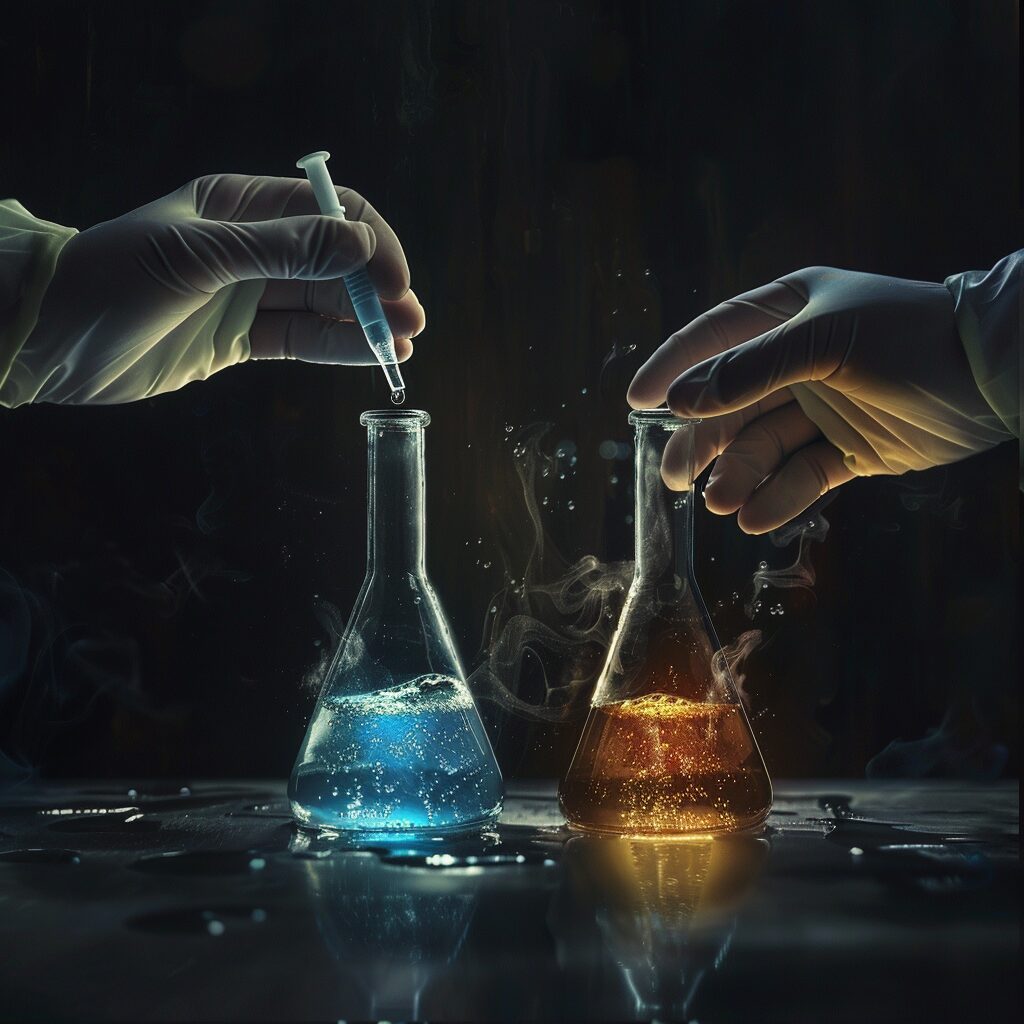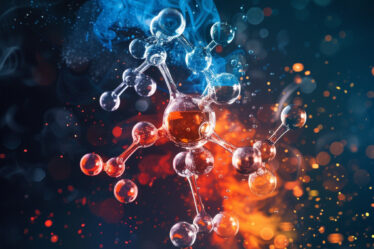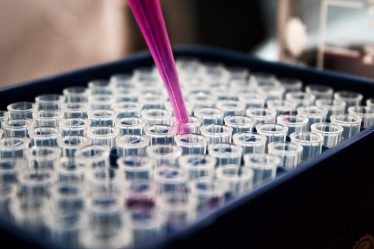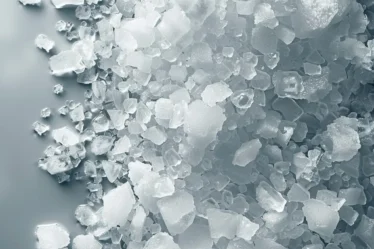
A substitution is a chemical reaction that occurs when one atom or group in a molecule is swapped with another.
Substitutions help create medicines, polymers, and other compounds we use daily. Certain antibiotics are made by using substitution reactions to adjust chemical structures.
In this online textbook, you’ll learn about the main types of substitution—nucleophilic, electrophilic, and radical substitution—and explore how they work in chemistry.
For more information on chemical reactions, consider electrophilic and nucleophilic addition. Addition reactions show how molecules combine directly, offering a helpful contrast to substitution.
Substitution Reaction: Quick Summary
Do you just need the basics? Here’s a simple explanation of what substitution is and what is the difference between nucleophilic, electrophilic, and radical substitution:




Struggling with chemical reactions, such as substitution? Don’t worry. A tutor can explain it in a way that clicks for you. You can also find more useful topics in our Chemistry blogs.
What is a Substitution Reaction?
A substitution occurs when an atom or group in a molecule is replaced by another atom or group. This type of reaction is common in organic chemistry, where it changes molecules’ properties by swapping out parts of their structure.
Substitution Formula and Example
Substitution General Formula:
In this formula,
Substitution Example Reaction:
A classic example is when chlorine in chloromethane (
Types of Substitutions
- Nucleophilic Substitution: A nucleophile, which is rich in electrons, takes the place of another group.
- Electrophilic Substitution: An electrophile, which lacks electrons, replaces an atom or group.
- Radical Substitution: A free radical, which has an unpaired electron, swaps with another atom or group.
Real-World Example
In methane chlorination, methane reacts with chlorine gas, swapping one hydrogen atom for a chlorine atom and forming chloromethane (
Types of Substitution Reactions
Substitution reactions can be grouped into three main types: nucleophilic, electrophilic, and radical substitution. Each type involves different particles and mechanisms. By exploring these types, you’ll understand how atoms or groups are swapped in various chemical processes.
Nucleophilic Substitution
In nucleophilic substitution, a nucleophile replaces a leaving group in a molecule. A nucleophile is an atom or molecule with extra electrons, often carrying a negative charge or lone pairs. It is attracted to positive or partially positive centers in other molecules. Let’s look at different mechanisms of nucleophilic substitution, SN1 and SN2 reactions.
SN1 Reaction
The SN1 (Substitution Nucleophilic Unimolecular) reaction happens in two steps:
- Formation of Carbocation: The leaving group exits, creating a positively charged carbocation.
- Nucleophile Attack: The nucleophile attaches to the carbocation, completing the substitution.
This reaction is common with tertiary carbons because they form stable carbocations. For example, when tertiary butyl chloride reacts with water, the chloride ion leaves, and water replaces it, forming tertiary butyl alcohol:
SN2 Reaction
The SN2 (Substitution Nucleophilic Bimolecular) reaction occurs in one step. The nucleophile attacks the carbon atom bonded to the leaving group from the opposite side, causing the leaving group to depart simultaneously. This reaction usually involves primary carbons. An example is the reaction of methyl bromide with a hydroxide ion to form methanol:
Comparison of SN1 and SN2 reaction
| Feature | SN1 Reaction | SN2 Reaction |
| Mechanism | Two steps | One step |
| Rate Depends On | Concentration of substrate | Concentrations of substrate and nucleophile |
| Carbocation Formed | Yes | No |
| Stereochemistry | Leads to racemic mixture | Inversion of configuration |
Real-Life Example of Nucleophilic Substitution: In organic synthesis, halogen atoms in alkyl halides can be replaced with other groups using nucleophilic substitution. This method creates alcohols, amines, and other important compounds.
Stereochemistry in Nucleophilic Substitution Reactions
Nucleophilic substitution reactions can change the spatial arrangement (stereochemistry) of molecules, depending on the reaction type:
SN1 Reactions: In SN1 reactions, the leaving group’s departure creates a temporary carbocation that the nucleophile can approach from either side. This often results in a mixture of two stereochemical forms, called a racemic mixture.
SN2 Reactions: In SN2 reactions, the nucleophile attacks from the opposite side of the leaving group. This “backside attack” causes the molecule to invert its configuration, producing a mirror image of the original structure, called stereochemical inversion.
Electrophilic Substitution
Electrophilic substitution involves an electrophile replacing a group in a molecule. An electrophile is an atom or molecule that seeks electrons, often carrying a positive charge or partial positive charge.
This type of reaction is common in aromatic compounds like benzene. Let’s look at different mechanisms of electrophilic substitution and aromatic and aliphatic substitution.
Aromatic Electrophilic Substitution
Electrophiles attack the electron-rich ring in aromatic rings to replace a hydrogen atom. Common reactions include:
- Nitration: Introducing a nitro group (
- Halogenation: Adding halogen atoms like chlorine or bromine using halogen carriers.
For example:
This reaction turns benzene into nitrobenzene, used in making dyes and pharmaceuticals.
Aliphatic Electrophilic Substitution
Though less common, electrophilic substitution can occur in aliphatic (non-aromatic) compounds. An example is the chlorination of alkanes under specific conditions, where a chlorine atom replaces a hydrogen atom.
Real-Life Example of Aliphatic Electrophilic Substitution: Modifying benzene rings in drug development often uses electrophilic substitution to add functional groups that change the drug’s activity.
Radical Substitution
Radical substitution involves free radicals swapping atoms or groups in molecules. A free radical is a species with an unpaired electron, making it highly reactive. Let’s look at the mechanism of radical substitution, the chain reaction.
Chain Reaction Mechanism
Radical substitution occurs in three stages:
1. Initiation:
Energy (like UV light) breaks a bond in a molecule, creating free radicals. For example, splitting chlorine gas into two chlorine radicals:
2. Propagation:
Radicals react with stable molecules to form new radicals, continuing the chain. A chlorine radical reacts with methane:
Then, the methyl radical reacts with another chlorine molecule:
3. Termination:
Two radicals combine to form a stable molecule, ending the chain:
Real-Life Example of Radical Substitution: The chlorination of methane produces chloromethane, which is used in manufacturing silicones and other chemicals.
Factors Affecting Substitution Reactions
Several factors can influence the speed and outcome of substitution reactions. These are temperature, solvent, and concentration.
Temperature:
Higher temperatures generally increase reaction rates. However, extreme heat may favor different reactions or break down sensitive molecules, so the temperature is adjusted based on the desired product.
Solvent:
Polar solvents tend to favor nucleophilic substitution reactions. For example, SN1 reactions often happen in polar protic solvents (like water or alcohol), which stabilize the carbocation intermediate. In contrast, SN2 reactions usually occur in polar aprotic solvents (like acetone), which don’t stabilize the nucleophile and encourage direct attack.
Concentration:
For SN2 reactions, the rate depends on the concentration of both the nucleophile and the substrate. Higher concentrations can speed up the reaction. For SN1, the concentration of the nucleophile doesn’t affect the rate, as the first step (formation of the carbocation) is the rate-determining step.
Differences Between Nucleophilic, Electrophilic, and Radical Substitution
Each type of substitution reaction involves different particles and mechanisms. Here’s a quick comparison to help you see the differences between nucleophilic, electrophilic, and radical substitution reactions:
Nucleophilic Substitution:
- Involves a nucleophile, which is rich in electrons.
- Common in reactions with saturated carbon compounds.
- Occurs via two main mechanisms: SN1 and SN2.
Electrophilic Substitution:
- Involves an electrophile, which is electron-poor.
- Common in aromatic compounds like benzene.
- Typically results in substitution on an aromatic ring.
Radical Substitution:
- Involves free radicals with unpaired electrons.
- Common in reactions involving alkanes.
- Follows a chain reaction mechanism with initiation, propagation, and termination steps.
Each type of reaction has unique requirements and outcomes, making them suited for different chemical processes.
Explore related topics:
Practical Applications of Substitution Reactions
Substitution reactions are essential in pharmaceuticals for modifying chemical structures to produce effective drugs. For instance, substitution reactions allow chemists to replace certain groups in a molecule, making the final compound more effective or reducing side effects. Antibiotics, painkillers, and many other medications rely on these precise chemical changes.
In agriculture, substitution reactions are used to synthesize pesticides and herbicides. By altering functional groups, chemists create compounds that target specific pests or weeds without harming crops. This selective action helps improve crop yields and reduce crop damage.
Substitution reactions are important in material science, as they are used to produce polymers and specialty materials. For example, chlorinated polymers are created using radical substitution, enhancing their durability and resistance to environmental damage. These materials are used in packaging, construction, and electrical insulation.
Substitutions in Industry
| Industry | Application | Example |
| Pharmaceuticals | Drug modification | Antibiotics, painkillers |
| Agriculture | Synthesis of pesticides and herbicides | Glyphosate, selective insecticides |
| Material Science | Production of durable polymers | PVC, chlorinated rubber |
These applications show how substitution reactions enable targeted and effective solutions across various fields, from medicine to material engineering.
Advance Your Knowledge of Substitution
Substitution reactions involve swapping an atom or group in a molecule with another, and they play a major role in chemistry. The three main types—nucleophilic, electrophilic, and radical substitution—follow different mechanisms.
Nucleophilic substitution includes SN1 and SN2 reactions, electrophilic substitution is common in aromatic compounds, and radical substitution follows a chain reaction process.
Are chemical reactions, such as substitution, tricky for you? A qualified chemistry instructor can explain complex topics in a way that makes sense to you, making organic and inorganic chemistry understandable and enjoyable.
Search for a tutor using phrases like “chemistry tutor Edinburgh” or “chemistry teacher Liverpool” on platforms like meet’n’learn. You’ll find someone who can tailor lessons to your needs.
If you prefer learning in a group, search for “chemistry classes Leeds” or “chemistry lessons London” online. The search will lead you to chemistry tutoring nearby.
Substitution: Frequently Asked Questions
1. What is a substitution reaction?
A substitution reaction is when another replaces one atom or group in a molecule.
2. What are the main types of substitution reactions?
The three main types are nucleophilic, electrophilic, and radical substitution reactions.
3. What is nucleophilic substitution?
Nucleophilic substitution involves a nucleophile replacing a group in a molecule, common in organic chemistry.
4. How does electrophilic substitution work?
In electrophilic substitution, an electrophile replaces a group in an electron-rich molecule, often in aromatic compounds.
5. What is a radical substitution reaction?
Radical substitution involves free radicals swapping atoms in a molecule, following a chain reaction mechanism.
6. How do SN1 and SN2 reactions differ?
SN1 is a two-step process that forms a carbocation, while SN2 is a one-step reaction with a direct nucleophile attack.
7. What affects substitution reaction rates?
Temperature, solvent type, and concentration impact how fast substitution reactions occur.
8. Where are substitution reactions used in industry?
Substitution reactions are essential in pharmaceuticals, agriculture, and material science to produce drugs, pesticides, and polymers.
Sources:
1. LibreTexts Chemistry
2. ChemGuide
3. Wikipedia



